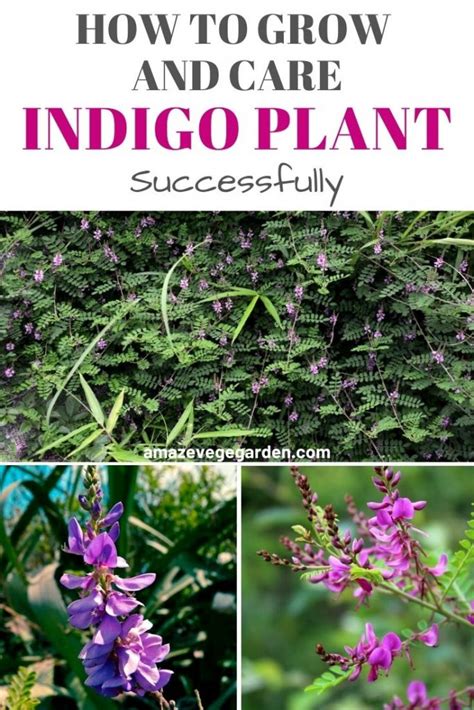How To Grow And Care For A Wild Indigo Plant
There's nothing quite like the vibrant blue hue of indigo, and if you're looking to grow your own, you're in luck! With a little bit of know-how and some care, growing indigo can be a rewarding and exciting experience. In this post, we'll cover all the essential information you need to get started, from planting to care to pruning and more. Plant Attributes Indigo plants are quite hardy and can grow in a wide range of conditions. They prefer full sun to partial shade and well-draining soil. If you're starting from seed, sow them in the spring after the last frost. The plants typically grow to be about 3-4 feet tall and require moderate water and fertilizer. Plant Care It's important to keep indigo plants moist, but be careful not to overwater them. Too much water can cause the roots to rot. Also, be mindful of pests such as mites and aphids, which can damage the plants. If you're growing indigo in a pot, make sure to use a container that is at least 12 inches deep, as the plants have deep roots. Pruning Pruning indigo plants is important for a few reasons. Firstly, it helps to keep the plants manageable and prevent them from becoming overgrown. Secondly, pruning can help to promote more vibrant color in the leaves. You should prune your indigo plant regularly, removing any dead or diseased wood and shaping the plant as desired. Propagation Indigo plants can be propagated by taking stem cuttings or by dividing the root ball. Stem cuttings are the easiest method and should be taken in late summer or early autumn. Once the cuttings have rooted (which can take up to a month), they can be transplanted into individual pots or directly into the ground. Potting & Repotting If you're growing indigo in a pot, make sure to choose a container that is at least 12 inches deep and has drainage holes. Fill the pot with well-draining soil, and water the plant regularly. If the plant becomes root-bound, it may need to be repotted. This can be done by gently loosening the roots and transferring the plant to a larger container. Common Pests & Plant Disease Indigo plants are relatively resistant to pests and disease, but there are a few things to look out for. Mites and aphids can be a problem, as can fungal diseases such as powdery mildew. Regular monitoring and prompt treatment can help to prevent these issues from becoming serious. Common Problems One of the most common problems with growing indigo is achieving the desired color. There are a few things you can do to help enhance the color of your leaves. Firstly, make sure your plant is getting enough sunlight. Secondly, avoid over-fertilizing, as this can cause the leaves to become too green. Finally, make sure to prune regularly to promote more vibrant color. In conclusion, growing indigo can be a fun and rewarding experience. With a little bit of care and attention, your indigo plant can provide you with vibrant blue leaves that are perfect for dyeing fabrics or adding a unique touch to your garden. So why not give it a try? Who knows, you might just discover a newfound love for gardening and a talent for dyeing! 


www.rickettsindigo.com - indigo growing admin august
www.amazevegegarden.com - baptisia australis perennial perennials exaltata successfully grandmont pol ruelles yougardener credited newsroom heilpraktikerschule ballyrobertgardens
www.amazevegegarden.com - successfully lavender take
:max_bytes(150000):strip_icc()/how-to-grow-and-care-for-california-poppies-4686987-03-210f00fcaf404e3fa3c873ea463bb050.jpg)



Post a Comment for "How To Grow And Care For A Wild Indigo Plant"